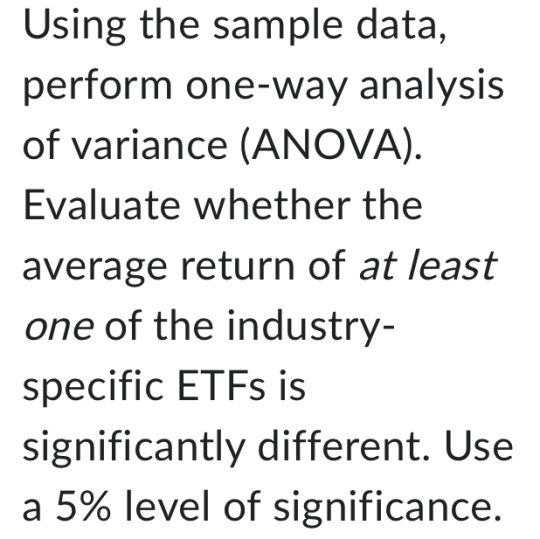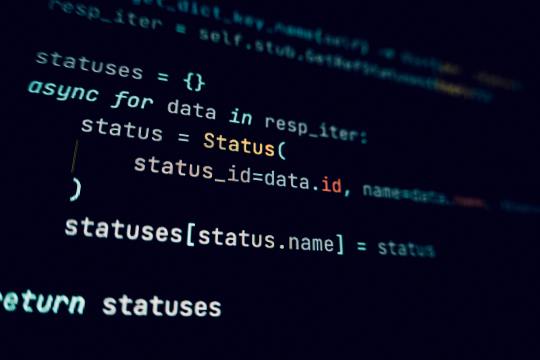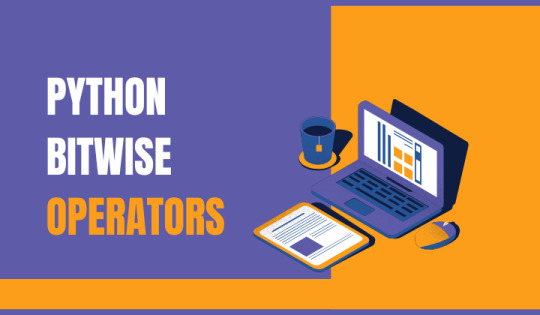#course on python
Explore tagged Tumblr posts
Text
course on python programming
Python programming has become one of the most popular and in-demand skills in the tech industry today. Techradiance offers a specialized course on Python programming designed for learners at all levels, from beginners to professionals looking to enhance their skills.
This course covers fundamental concepts like variables, loops, and functions, and extends into advanced topics such as data structures, object-oriented programming, and libraries like NumPy and Pandas. Through hands-on projects, students will gain practical experience by developing real-world applications, making learning interactive and engaging.
What sets Techradiance apart is its focus on both theory and practice. With industry-expert instructors, the course ensures that learners understand not only the coding basics but also how Python is applied in fields such as data science, artificial intelligence, and web development.
Whether you're a student looking to start a career in programming or a professional aiming to add a powerful language to your skill set, Techradiance’s Python programming course is tailored to meet your needs. With flexible schedules, interactive lessons, and comprehensive resources, you will be well-equipped to tackle Python-based projects and open doors to new career opportunities

0 notes
Text
It's not even about the vindication of calling a ship, okay. It's that the supposedly anti woke studio wrote about 3 million words of medieval fiction centering the relationship of the two main characters who are in most ways (or in all ways if you follow the obvious canon momentum of the story) meant for each other, as counterparts who help each other survive the great travails of their lives and who challenge/complete the other to become fuller, braver, kinder people. It's so clear these two people are soulmates, platonically or romantically, something observed consistently by the world around them and by themselves.
Except their society (feudalism, Catholicism) dictates that they are intended to be completely incompatible by nature and divine law. Not just for the obvious fact they are both men, but they are separated by what is arguably an even steeper chasm of social class. Their existence even as friends utterly spites, interrupts, and threatens feudal order right down to its theological and philosophical roots. They should not see each other as human and yet.
It's the fact that they do. The fact that the entire story has been about this--that these two protagonists fit together, undeniably, and grow to love each other fiercely (a love that deepens superbly from their knee-jerk playful puppy-friend-love in kcd1 to something selfless and mature by the end of kcd2). And they do so despite the immense opposition by their world, their social circles, their faith, and indeed their fandom.
And yes, it really does fucking matter that all of this culminates into a deep onscreen romantic love (if you get out of the way and allow it to) between two fandom-beloved male main characters (not just side characters rammed in for an optional gay romance but THE main characters of the duology; the "you" as in the player character and your erstwhile dick-jokes bro you have perhaps grudgingly at first been invited as the audience to love) in a historical fiction story that has been wrongly touted by the worst of our contemporaries as the holy grail of cultural conservatism.
Holy shit. Warhorse -- y'all. I'm sorry I doubted you. So few game writers understand how love works and indeed how people work, let alone translate it so well onto the screen.
Calling this an "optional romance" is not technically incorrect, I suppose, because it's true you can opt out and choose to remain platonic friends. But this language feels like a disservice, as if Henry & Hans's romance is a typical RPG wham-bam fanservice makeout with a minor fan fave character who never interacts meaningfully with the player again. Or as if it's a Bioware-style "give this NPC the right gift and do their side quest and you get to see a jankly ugly-bumpin' montage" situation.
Kingdom Come: Deliverance is so very much not that. The "main, optional" romance scene in question is just one consummation event of two people who have been growing up and falling in love in front of us over the course of some 200-300 (or god knows how many) hours. The fact these protagonists openly love each other is very much not optional.
This is, sincerely, groundbreaking storytelling in this medium and this genre. How fucking cool that we all got to see it now.
#kingdom come deliverance#kcd#redmeta#spoilers#henry of skalitz#hans capon#not to shade bioware (okay totally to shade bioware) but i've long felt they write like the low-middest YA fantasy you've ever read#Warhorse writes like an adult who has experienced love and pain and is also a professional author#which is pleasing given that there's so much monty python humor in their games and so many immature personalities in the char cast#this is of course not to say that all elements of the storytelling are as top notch or as mature as the main thread but you know. wow#i mean this as the absolute highest compliment but this game feels like playing the best fucking fanfic you have ever read in your life#in its intimacy its storytelling methods and its focus on complex artistry and relationship building as the vehicle for plot
911 notes
·
View notes
Text

#obey me#obey me leviathan#obey me levi#henry 1.0#traditional art#styx scribbles#this was based on that introductory python programming course meme even tho the snakes in that meme are not pythons#and i have no idea what snake henry is lol
68 notes
·
View notes
Text




I need to be in a butch/femme relationship with him
#hes the femme of course#im an amateur python fan dont ask me any questions#monty python#eric idle you are a beautiful beautiful lady
51 notes
·
View notes
Text
An interesting journey of discovery
So first I stumbled upon this from Ultrafacts:

Well THAT’S interesting. Some googling confirmed it: John Cleese talked in an interview about when he learned of this in school -- his English teacher seemed to have come away with the impression that “If you didn't give up, you couldn't lose.” And that led to “It’s just a flesh wound!!!” years later.
Then I checked Wikipedia for the wrestler they were talking about, and was brought up short by this image:

I know that statue, I thought. I’ve seen it with wings.
And I wasn’t wrong.

Yup, it’s the same one! Different angle, but same pose.

So that’s amazing. Monty Python, ineffable stubbornness, and naked wrestling.
I’m not sure what conclusion to draw from this, but I’m sure there are several.
#Good Omens#Monty Python#didn't expect to use those tags together but here we are#'where do you get your ideas?'#'English class anecdotes about juicy bits of history of course'#and this is naturally a dignified and Classical statue to base an angel one on#plus it's nekkid#and that gives it a whole different slant than if there had been tasteful togas or what have you#'are you sure they're wrestling?'
502 notes
·
View notes
Text

No idea if this person follows me BUT while the industry standard for GIS software (ArcGIS pro) is incredibly expensive, there are open source alternatives like QGIS. A lot of governments and organizations also have open data portals that you can grab data from (shapefiles, CSVs, rasters, whatever).
I've kind of been taught ground-up in person so I don't have recommendations on video tutorials for teaching basic concepts sadly. Bolstadt GIS fundamentals is good and was dirt cheap by textbook standards though (was like $40 iirc).
"Learning GIS" I guess also depends on what you want to do with it? If you want to mess around with cartography and data visualization you could probably just give yourself some pet projects.
#of course i would never. never pirate a textbook. cough.#i like highlighting while reading though so im happy i bought a physical copy of that one specifically#iirc open source GIS software also requires you to lean on SQL and python a little more. though i could be wrong#not art
30 notes
·
View notes
Text
writes with python ”ugh I wanna write javascript” -> writes with javascript ”ugh I wanna write c++” -> writes with c++ ”I have made a horrible mistake”
#i’m trying to not start that one C++ course that haunts me#ever since I first signed uo for it last january but dropped it in february bc one (1) task took me a month#and by month I mean like I was at it basically everyday#and it has 100 of those#(it’s like leetcode things but with C++ (I’ve done 2 courses like that but with Python so thought I’d do it quick bc the only difference is#the language))#granted I had 0 knowledge of C++ before that so like hm#did sign up now for an entrylevel C++ course bc istg I’ll finish that course someday it’s in my mind constantly#(currently am writing with javascript and I’m getting bored)#(and I want that C++ course to start already but like it’s good it hasn’t yet bc got lots of other stuff as well)#codeblr#2024#february 2024
89 notes
·
View notes
Text
Hera's relationship with Apollo is something that should be studied, in this essay I-
#like imagine the hatred at his birth#another bastard of her husband#and then the grudging respect when he kills python#not because its python but because he avenged his mother's assault#and maybe she wishes someone would avenge HER assault#and when hes exiled she just the tiniest bit admires artemis' strength#how she is so firm about her virginity and how shes a protector of women#so she wont like apollo when he comes back but she might not hate him#and then when he's given his domains and he so much better than her sons and so much more of zeus' favourite she HATEs him#(she wishes he were hers)#but when she decides to rebel against zeus hes one of the only gods that join her.#of course they fail but thats got to unite them somehow#right?#and then when he storms olympus after Asclepius dies (is murdered)#when he kills the elder cyclopes as a deliberate jab at zeus#not even caring about the consequences#well shes got to respect that#and they might drift apart after the trojan war#being on opposite sides and all#but i like to think she views him more than just her husbands bastard#hera#hera goddess#apollo#apollo greek god#greek mythology
36 notes
·
View notes
Text
me: I have way too much going on, I need a break in which I don't have to think about anything
also me, immediately: for my class TEI exercise I shall choose to encode a page of House of Leaves
#and before you ask. yes of course it's one of Those pages#gotta be clear this was not necessary by any means I'm just insane#but like. I learn coding languages best by trying to see where the edges are lmfao#see also: the unhinged quiz game I turned in last year for my python class that was also NOT necessary#and I do want to use TEI for other things so like if I'm learning it I'm gonna fuckin learn it#this is fun for me for the record I'm not like torturing myself#megs vs mlis
11 notes
·
View notes
Text
i think it's immoral for me to buy earmuffs and i also think it's immoral for me to have a wedding and unfortunately i'm currently failing to distinguish these or figure out if either is true
#it's also immoral to buy yarn.#box opener#bad day today. brain very problematic for unclear reasons besides of course the fundamental immorality of wedding planning#actual day was nice but then i went to work and came home and somewhere in there i became incorrectly configured#also i'm stressed because i don't understand python executable pathways. or virtual machines.#... it would be nice to own earmuffs. my hat isn't very warm
10 notes
·
View notes
Text
going into my final week of classes and we always have one last week after the final paper (so the professors have time for grading) where typically the only work we have is one last discussion post.
usually, this post is pretty simple and light (to go easy on us after the final). my ethics class is like “summarize your conclusions from your final paper! :)” and my communications class is like “tell the class about your career goals! :)”
meanwhile, statistics…

#which is very easy - it’s just FUNNY#you thought we were done learning new material after the final? THINK AGAIN!!!!!!!!#READ THE PYTHON SCRIPT AND WEEP#no but stats was my favorite class this semester…#i still wanna take stats II but i haven’t decided for sure yet#it’s a lot of work but it’s very straightforward work#as opposed to my environmental and communications courses that involve a lot of opinion#which is fine but can be really tiring when the thing they want my opinion about is stupid or repetitive#like. FOUR courses made me take that one environmental footprint calculator quiz…#FOUR SEPARATE COURSES#and it’s like. i’m not saying it’s not important - but i GET IT!!!!!!!#at this point it’s just a waste of my time - teach me something i don’t already know!#i definitely should have taken a different online program but that’s beside the point#it’ll even out once i get my master’s#and i’m ultimately happy to have had the ‘broader’ education of environmental science (with a communication minor)#bc i think that’ll serve me better in management later in my career#even if it makes early career stuff more difficult
10 notes
·
View notes
Text
SQL Fundamentals #1: SQL Data Definition
Last year in college , I had the opportunity to dive deep into SQL. The course was made even more exciting by an amazing instructor . Fast forward to today, and I regularly use SQL in my backend development work with PHP. Today, I felt the need to refresh my SQL knowledge a bit, and that's why I've put together three posts aimed at helping beginners grasp the fundamentals of SQL.
Understanding Relational Databases
Let's Begin with the Basics: What Is a Database?
Simply put, a database is like a digital warehouse where you store large amounts of data. When you work on projects that involve data, you need a place to keep that data organized and accessible, and that's where databases come into play.
Exploring Different Types of Databases
When it comes to databases, there are two primary types to consider: relational and non-relational.
Relational Databases: Structured Like Tables
Think of a relational database as a collection of neatly organized tables, somewhat like rows and columns in an Excel spreadsheet. Each table represents a specific type of information, and these tables are interconnected through shared attributes. It's similar to a well-organized library catalog where you can find books by author, title, or genre.
Key Points:
Tables with rows and columns.
Data is neatly structured, much like a library catalog.
You use a structured query language (SQL) to interact with it.
Ideal for handling structured data with complex relationships.
Non-Relational Databases: Flexibility in Containers
Now, imagine a non-relational database as a collection of flexible containers, more like bins or boxes. Each container holds data, but they don't have to adhere to a fixed format. It's like managing a diverse collection of items in various boxes without strict rules. This flexibility is incredibly useful when dealing with unstructured or rapidly changing data, like social media posts or sensor readings.
Key Points:
Data can be stored in diverse formats.
There's no rigid structure; adaptability is the name of the game.
Non-relational databases (often called NoSQL databases) are commonly used.
Ideal for handling unstructured or dynamic data.
Now, Let's Dive into SQL:

SQL is a :
Data Definition language ( what todays post is all about )
Data Manipulation language
Data Query language
Task: Building and Interacting with a Bookstore Database
Setting Up the Database
Our first step in creating a bookstore database is to establish it. You can achieve this with a straightforward SQL command:
CREATE DATABASE bookstoreDB;
SQL Data Definition
As the name suggests, this step is all about defining your tables. By the end of this phase, your database and the tables within it are created and ready for action.

1 - Introducing the 'Books' Table
A bookstore is all about its collection of books, so our 'bookstoreDB' needs a place to store them. We'll call this place the 'books' table. Here's how you create it:
CREATE TABLE books ( -- Don't worry, we'll fill this in soon! );
Now, each book has its own set of unique details, including titles, authors, genres, publication years, and prices. These details will become the columns in our 'books' table, ensuring that every book can be fully described.
Now that we have the plan, let's create our 'books' table with all these attributes:
CREATE TABLE books ( title VARCHAR(40), author VARCHAR(40), genre VARCHAR(40), publishedYear DATE, price INT(10) );
With this structure in place, our bookstore database is ready to house a world of books.
2 - Making Changes to the Table
Sometimes, you might need to modify a table you've created in your database. Whether it's correcting an error during table creation, renaming the table, or adding/removing columns, these changes are made using the 'ALTER TABLE' command.
For instance, if you want to rename your 'books' table:
ALTER TABLE books RENAME TO books_table;
If you want to add a new column:
ALTER TABLE books ADD COLUMN description VARCHAR(100);
Or, if you need to delete a column:
ALTER TABLE books DROP COLUMN title;
3 - Dropping the Table
Finally, if you ever want to remove a table you've created in your database, you can do so using the 'DROP TABLE' command:
DROP TABLE books;
To keep this post concise, our next post will delve into the second step, which involves data manipulation. Once our bookstore database is up and running with its tables, we'll explore how to modify and enrich it with new information and data. Stay tuned ...
Part2
#code#codeblr#java development company#python#studyblr#progblr#programming#comp sci#web design#web developers#web development#website design#webdev#website#tech#learn to code#sql#sqlserver#sql course#data#datascience#backend
112 notes
·
View notes
Text
Python for Beginners: Launch Your Tech Career with Coding Skills
Are you ready to launch your tech career but don’t know where to start? Learning Python is one of the best ways to break into the world of technology—even if you have zero coding experience.
In this guide, we’ll explore how Python for beginners can be your gateway to a rewarding career in software development, data science, automation, and more.
Why Python Is the Perfect Language for Beginners
Python has become the go-to programming language for beginners and professionals alike—and for good reason:
Simple syntax: Python reads like plain English, making it easy to learn.
High demand: Industries spanning the spectrum are actively seeking Python developers to fuel their technological advancements.
Versatile applications: Python's versatility shines as it powers everything from crafting websites to driving artificial intelligence and dissecting data.
Whether you want to become a software developer, data analyst, or AI engineer, Python lays the foundation.
What Can You Do With Python?
Python is not just a beginner language—it’s a career-building tool. Here are just a few career paths where Python is essential:
Web Development: Frameworks like Django and Flask make it easy to build powerful web applications. You can even enroll in a Python Course in Kochi to gain hands-on experience with real-world web projects.
Data Science & Analytics: For professionals tackling data analysis and visualization, the Python ecosystem, featuring powerhouses like Pandas, NumPy, and Matplotlib, sets the benchmark.
Machine Learning & AI: Spearheading advancements in artificial intelligence development, Python boasts powerful tools such as TensorFlow and scikit-learn.
Automation & Scripting: Simple yet effective Python scripts offer a pathway to amplified efficiency by automating routine workflows.
Cybersecurity & Networking: The application of Python is expanding into crucial domains such as ethical hacking, penetration testing, and the automation of network processes.
How to Get Started with Python
Starting your Python journey doesn't require a computer science degree. Success hinges on a focused commitment combined with a thoughtfully structured educational approach.
Step 1: Install Python
Download and install Python from python.org. It's free and available for all platforms.
Step 2: Choose an IDE
Use beginner-friendly tools like Thonny, PyCharm, or VS Code to write your code.
Step 3: Learn the Basics
Focus on:
Variables and data types
Conditional statements
Loops
Functions
Lists and dictionaries
If you prefer guided learning, a reputable Python Institute in Kochi can offer structured programs and mentorship to help you grasp core concepts efficiently.
Step 4: Build Projects
Learning by doing is key. Start small:
Build a calculator
Automate file organization
Create a to-do list app
As your skills grow, you can tackle more complex projects like data dashboards or web apps.
How Python Skills Can Boost Your Career
Adding Python to your resume instantly opens up new opportunities. Here's how it helps:
Higher employability: Python is one of the top 3 most in-demand programming languages.
Better salaries: Python developers earn competitive salaries across the globe.
Remote job opportunities: Many Python-related jobs are available remotely, offering flexibility.
Even if you're not aiming to be a full-time developer, Python skills can enhance careers in marketing, finance, research, and product management.
If you're serious about starting a career in tech, learning Python is the smartest first step you can take. It’s beginner-friendly, powerful, and widely used across industries.
Whether you're a student, job switcher, or just curious about programming, Python for beginners can unlock countless career opportunities. Invest time in learning today—and start building the future you want in tech.
Globally recognized as a premier educational hub, DataMites Institute delivers in-depth training programs across the pivotal fields of data science, artificial intelligence, and machine learning. They provide expert-led courses designed for both beginners and professionals aiming to boost their careers.
Python Modules Explained - Different Types and Functions - Python Tutorial
youtube
#python course#python training#python#learnpython#pythoncourseinindia#pythoncourseinkochi#pythoninstitute#python for data science#Youtube
3 notes
·
View notes
Text
Why Learning Python is the Perfect First Step in Coding
Learning Python is an ideal way to dive into programming. Its simplicity and versatility make it the perfect language for beginners, whether you're looking to develop basic skills or eventually dive into fields like data analysis, web development, or machine learning.
Start by focusing on the fundamentals: learn about variables, data types, conditionals, and loops. These core concepts are the building blocks of programming, and Python’s clear syntax makes them easier to grasp. Interactive platforms like Codecademy, Khan Academy, and freeCodeCamp offer structured, step-by-step lessons that are perfect for beginners, so start there.
Once you’ve got a handle on the basics, apply what you’ve learned by building small projects. For example, try coding a simple calculator, a basic guessing game, or even a text-based story generator. These small projects will help you understand how programming concepts work together, giving you confidence and helping you identify areas where you might need a bit more practice.
When you're ready to move beyond the basics, Python offers many powerful libraries that open up new possibilities. Dive into pandas for data analysis, matplotlib for data visualization, or even Django if you want to explore web development. Each library offers a set of tools that helps you do more complex tasks, and learning them will expand your coding skillset significantly.
Keep practicing, and don't hesitate to look at code written by others to see how they approach problems. Coding is a journey, and with every line you write, you’re gaining valuable skills that will pay off in future projects.
FREE Python and R Programming Course on Data Science, Machine Learning, Data Analysis, and Data Visualization

#learntocode#python for beginners#codingjourney#programmingbasics#web development#datascience#machinelearning#pythonprojects#codingcommunity#python#free course
10 notes
·
View notes
Text
Python Bitwise Operators
Bitwise operators in Python work directly with binary numbers (0s and 1s), which are how computers understand data. They are useful when you want to perform fast and efficient calculations, especially in programming tasks like encryption, compression, or low-level data handling. Instead of dealing with full numbers, these operators compare individual bits of those numbers. Learning them can help you write better-performing code.

Important Bitwise Operators in Python
AND (&) – Compares bits of two numbers and gives 1 only if both bits are 1. Otherwise, it gives 0.
OR (|) – Returns 1 if at least one of the compared bits is 1. It gives 0 only if both bits are 0.
XOR (^) – Gives 1 when the two bits are different. If they are the same, the result is 0.
NOT (~) – Flips every bit in a number. 0 becomes 1, and 1 becomes 0, effectively turning the number negative.
Left Shift (<<) – Moves bits to the left, which is like multiplying the number by 2 for every shift.
Right Shift (>>) – Moves bits to the right, which works like dividing the number by 2 for every shift.
For more detailed information, you can visit the original article: Python Bitwise Operators | PrepInsta.
#software#courses#coding#python#python course#online courses#prepinsta#jobsearch#jobs#online jobs#working
3 notes
·
View notes